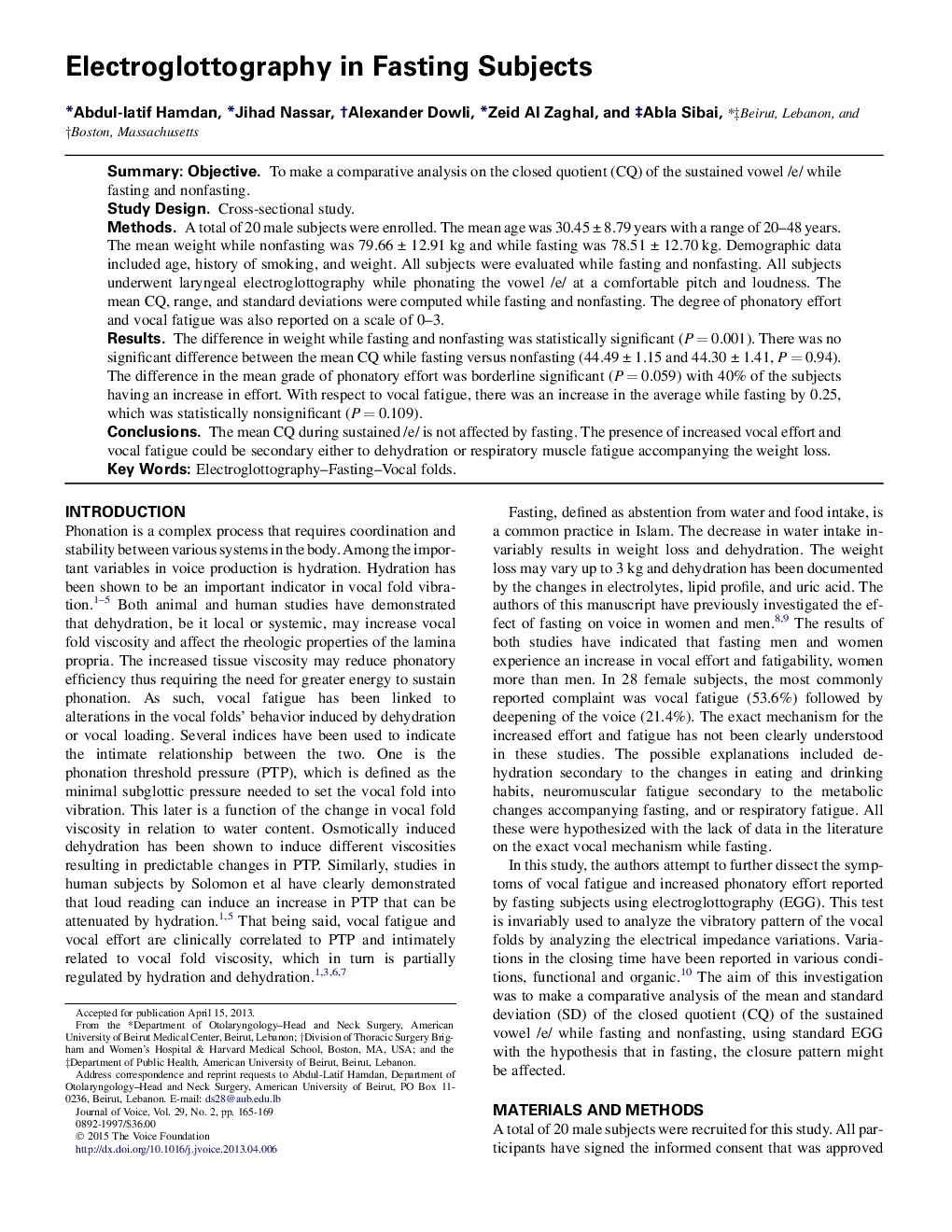| Article ID | Journal | Published Year | Pages | File Type |
|---|---|---|---|---|
| 1101306 | Journal of Voice | 2015 | 5 Pages |
SummaryObjectiveTo make a comparative analysis on the closed quotient (CQ) of the sustained vowel /e/ while fasting and nonfasting.Study DesignCross-sectional study.MethodsA total of 20 male subjects were enrolled. The mean age was 30.45 ± 8.79 years with a range of 20–48 years. The mean weight while nonfasting was 79.66 ± 12.91 kg and while fasting was 78.51 ± 12.70 kg. Demographic data included age, history of smoking, and weight. All subjects were evaluated while fasting and nonfasting. All subjects underwent laryngeal electroglottography while phonating the vowel /e/ at a comfortable pitch and loudness. The mean CQ, range, and standard deviations were computed while fasting and nonfasting. The degree of phonatory effort and vocal fatigue was also reported on a scale of 0–3.ResultsThe difference in weight while fasting and nonfasting was statistically significant (P = 0.001). There was no significant difference between the mean CQ while fasting versus nonfasting (44.49 ± 1.15 and 44.30 ± 1.41, P = 0.94). The difference in the mean grade of phonatory effort was borderline significant (P = 0.059) with 40% of the subjects having an increase in effort. With respect to vocal fatigue, there was an increase in the average while fasting by 0.25, which was statistically nonsignificant (P = 0.109).ConclusionsThe mean CQ during sustained /e/ is not affected by fasting. The presence of increased vocal effort and vocal fatigue could be secondary either to dehydration or respiratory muscle fatigue accompanying the weight loss.
